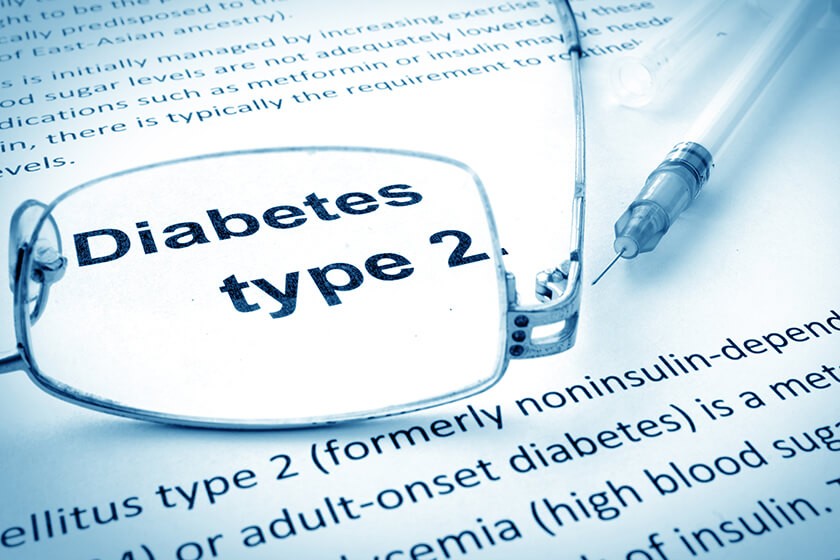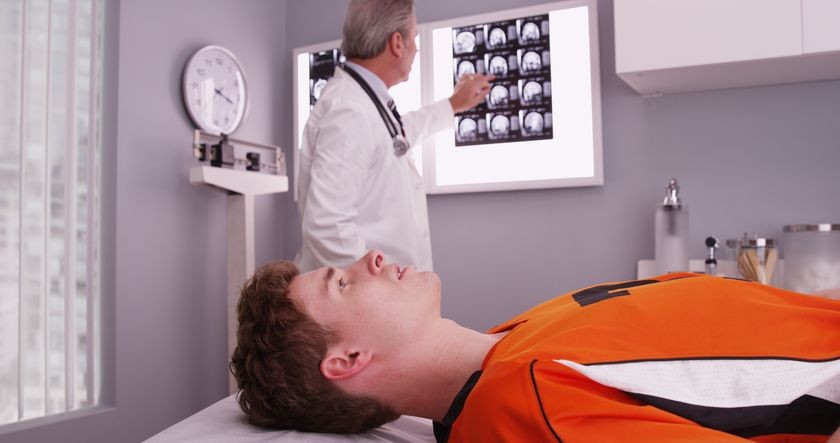
Shoulder “Brightness” on Ultrasound Imaging – A Sign of Diabetes?

Type 2 diabetes has a number of warning signs, such as frequent urination, increased thirst, fatigue, hunger, and slow wound healing. The results of a new study suggest that shoulder “brightness” on an ultrasound test might also be a sign of diabetes.
Doctors frequently use ultrasound to diagnose shoulder problems, such as sprains, strains, tears, and other soft tissue conditions. Ultrasound imaging uses sound waves to create images of body tissues, such as muscles, ligaments and tendons.
About ten years ago, one musculoskeletal radiologist began to notice a pattern in which bright spots would show up on a specific shoulder muscle in some of his ultrasound patients. Specifically, he saw bright spots on the deltoid muscle, which is the largest muscle in the shoulder.
The doctor, Steven B. Soliman, D.O., and his team at Henry Ford Hospital in Detroit began to ask these patients if they had diabetes. The patients who had bright spots on this shoulder muscle said that they either had diabetes or were borderline diabetics who did not take medicine for diabetes.
Soliman and a team of colleagues from Henry Ford Hospital decided to perform a study to see if brightness, known among radiologists as echogenicity, of the deltoid muscle could predict diabetes. They gathered shoulder ultrasounds from a number of patients. Specifically, they included 137 shoulder ultrasounds from patients who had type II diabetes; 13 of these patients had pre-diabetes. The researchers also included 49 ultrasounds from obese participants who did not have diabetes.
The research team then asked two musculoskeletal radiologists to view the ultrasound images and classify each image into one of three groups, based on the brightness of the deltoid muscle: normal, suspected diabetes and definite diabetes. A third radiologist served as an arbitrator in any instances where the two musculoskeletal radiologists disagreed.
Simply by looking at the brightness of the deltoid muscles on ultrasound images, the radiologists accurately predicted type 2 diabetes 89 percent of the time.
Many of the patients in the study did not know that they had diabetes or pre-diabetes. This is important to note because many people with diabetes do not realize they have it. In fact, the Centers for Disease Control and Prevention (CDC) notes that more than 30 million people in the United States have diabetes, and one in four people do not know that they have it.
Diabetes is a medical condition in which the body does not absorb blood sugar, also known as blood glucose properly. The digestive tract absorbs sugars from food and drinks, and then converts it into a form of glucose that the body can use for energy. The pancreas produces insulin, which works to “unlock” muscle cells so they can absorb the glucose.
In people with diabetes, the muscles do not absorb the glucose properly, which causes blood glucose levels to remain high while the muscles do not receive the energy they need to function. There are two types of diabetes. In type I diabetes, the pancreas does not produce insulin. In type II diabetes, the muscle cells become “insulin resistant,” which means the muscle cells do not use insulin properly to absorb the sugar. People with both types of diabetes must use medications to keep blood sugar at healthy levels.
More than 84 million Americans have pre-diabetes, which means their bodies have trouble using the blood glucose but they do not have to take medications. About 90 percent of people with pre-diabetes do not know that they have it.
Diagnosing and controlling diabetes is important because, when left untreated, diabetes can have serious complications, such as heart disease and kidney failure. Diabetes is the seventh leading cause of death in the United States. Early detection, even if found incidentally on an ultrasound, could allow for earlier intervention. Someone who finds out that they have pre-diabetes could lose weight and exercise more to reduce the risk of developing type II diabetes, for example, and someone who finds out that they have type II diabetes can get it under control sooner.
Why Deltoid Muscles may be Brighter on Ultrasound
The researchers have not yet determined exactly why the deltoid muscle appears so much brighter on ultrasound in people with diabetes, but they think it has to do with low levels of glycogen, which is an important source of energy that the body normally stores in muscles and in the liver.
The body converts extra glucose into glycogen for storage in muscle and liver cells. When the body needs extra energy in between meals, it converts glycogen back into glucose then releases this sugar back into the blood.
Glycogen levels can go very low due to lack of food or intense exercise. Previous research shows that muscles of athletes appear brighter on ultrasound following exercise, when glycogen stores have been depleted. Research shows that glycogen levels can be decreased up to 65 percent in people with diabetes.
Research like this underscores the importance of ultrasound imaging and other tests. Radiologists and the imaging tools they use can detect illnesses, injuries and conditions long before the patient is ever aware of them.




